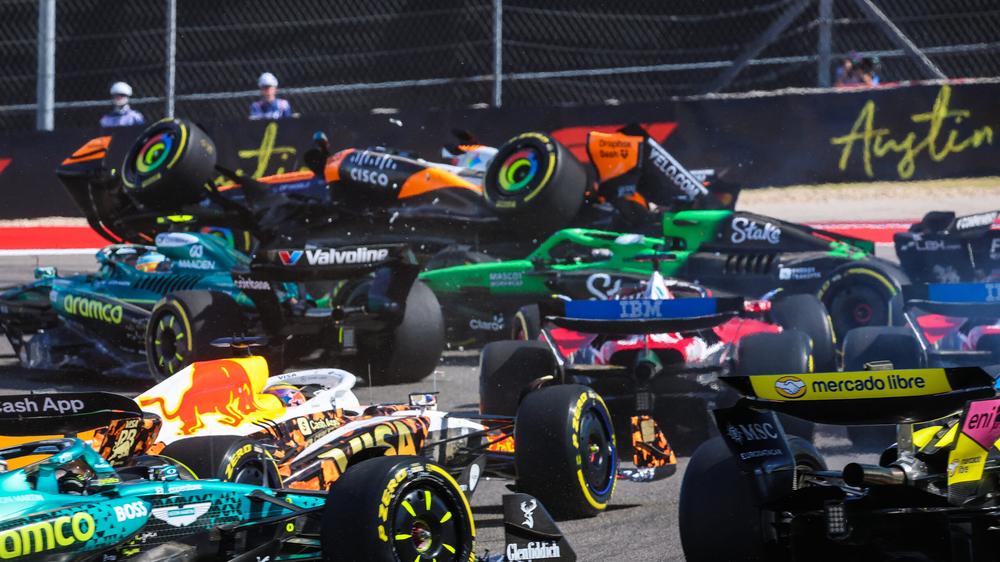Formula 1 held the third of its five North American rounds this past weekend at the Circuit of the Americas in Austin, Texas. Unlike the races in Montreal, Miami, and Las Vegas, the US Grand Prix is held on a proper road course, one purpose-built for the task of hosting F1 a little over a decade ago.
It’s a circuit Ars knows quite well—along with some friends, I was on the turn-19 banking for the first race in 2012, and we checked out Caterham’s setup the following year; toured the F1 tech center in 2015, where the race broadcasts are directed; then learned about tires there with Pirelli in 2021. And we’ve driven it in everything from an Audi TT-S to a Corvette ZR1 to a Mocabene Vent Noir. Not to mention all the Lone Star Le Mans races we’ve attended.
The crowds now exceed even the mass of humanity that showed up for that first race. And while Miami and Las Vegas have been pitched at the “more money than they know what to do with” people, ticket prices at COTA are more reasonable (for an F1 event). As long as you don’t mind brutal heat and humidity, it can be quite a good race to attend.
Replacing the boss made sense
At this stage in the championship, Oscar Piastri fans can be forgiven if they’re in full panic mode. The young Australian McLaren driver was the firm championship leader going into the summer break, but a series of disastrous weekends have seen his lead eroded by both his teammate Lando Norris, and now a resurgent Max Verstappen.
Verstappen’s Red Bull team replaced its team boss earlier this year. Former boss Christian Horner was mired in scandal last year, but it was the undriveable car that led to his ousting earlier this year. In July, Laurent Mekies moved from the junior Racing Bulls team to become CEO and team principal of Red Bull, having a transformative effect in the process. A revitalized Verstappen had scored two second places and two wins in the four races leading up to the US GP, and even his beleaguered teammate Yuki Tsunoda has looked more comfortable in the car since Meikes’ arrival.
It’s not that Red Bull RB20 is faster than all the other cars, as its predecessors were from 2022–2023. But a new front wing and perhaps some new insights into car setup have made the car about as quick as this year’s McLaren in this second half of the season, and Verstappen appears to be driving at or near his stratospheric peak.
This weekend the gap to Piastri closed even more. It was only Piastri’s second visit to COTA, and neither this year nor the last has he looked like he has truly gelled with the track. Most F1 circuits are as smooth as a pool table, but not COTA—over the last 13-plus years the earthworks that were built to create its elevation changes have settled here and there, baking in the summers and cooling in the winters to litter the track with bumps everywhere that unsettle an F1 car on the limit.
Sprint SNAFU
Things weren’t helped by the sprint race on Saturday. Verstappen started on pole, with Norris and Piastri behind him. At turn 1, it all went wrong as four cars tried to occupy space only big enough for maybe three of them. Piastri got a little air as he collided with his teammate, ending both their races. Verstappen went on to win easily, taking eight points out of Piastri’s lead.
This generation of F1 car was designed to be able to follow another one without losing downforce, but as the teams have developed their cars over the last few years, that ability has eroded, and yet again running in clean air is the way to maximize laptimes.
It got worse for Piastri when he only qualified in sixth place for Sunday’s race, with Verstappen and Norris—his two title rivals—starting first and second again.
On Sunday, like in the sprint, Verstappen was unchallenged into turn 1 and drove to the checkered flag without much drama. Norris probably had the speed to challenge him, but the Ferrari of Charles Leclerc, which started the race on soft tires rather than mediums, used his grip advantage to pass Norris at the first turn. Within about four laps Leclerc’s tires had already given their best, allowing Verstappen to eke out a small lead.
What followed was a wonderfully exciting battle between Norris and Leclerc for second place. The drivers were on different strategies: Leclerc would switch to a medium after his soft tire, Norris would do the opposite. It took Norris a while to pass Leclerc the first time, with the McLaren driver trying the same cutback move at a number of corners without success before eventually succeeding.
But Leclerc stopped first, and when Norris made his tire change he yet again had to overtake Leclerc. This time Norris was much braver on the brakes into turn 12 to complete the move. Once in clean air, Norris was matching Verstappen’s speed, but the gap was too much to close down.
Verstappen’s win brings him to within 40 points of Piastri, with Norris just 14 points behind his teammate. And remember, there’s 25 points for a win—another non-finish for Piastri would be a disaster now. Should Verstappen manage to overtake both, he will have overcome the greatest points deficit in F1 history to do so.
History doesn’t repeat itself, but they do say it rhymes. And I’m hearing some of the same melodies as 2007, when dueling McLaren drivers took points off each other to allow Kimi Räikkönen and Ferrari to win the driver’s championship—and also 1986, when dueling Williams drivers lost to the McLaren of Alain Prost. If 2025 becomes Verstappen’s fifth world championship, it should go down as his most accomplished.
And there’s not long to wait: The next round takes place next weekend in Mexico City.

 Chiacchiero di Wikipedia su Radio Capital
Chiacchiero di Wikipedia su Radio Capital